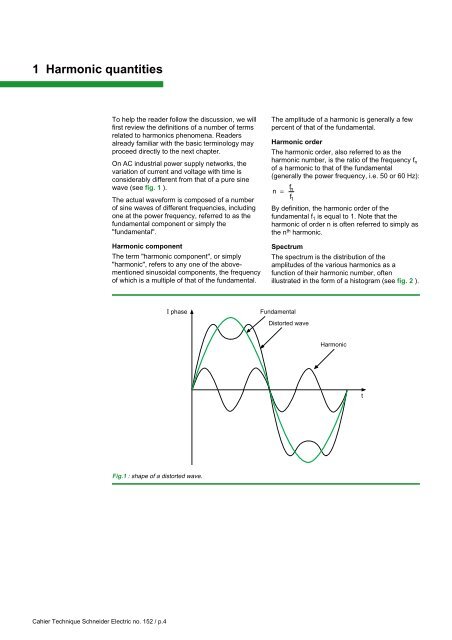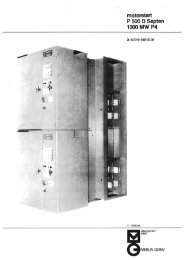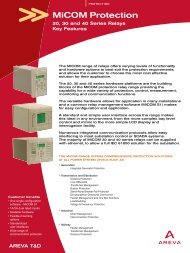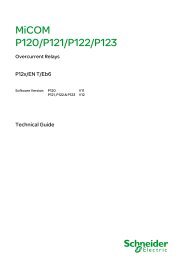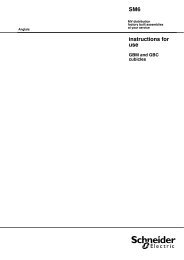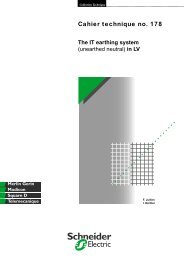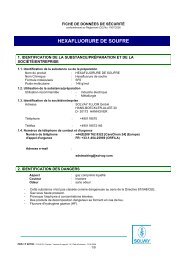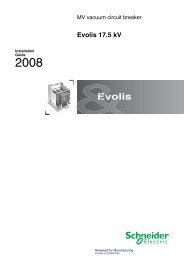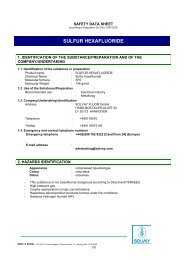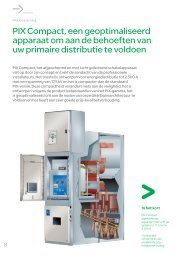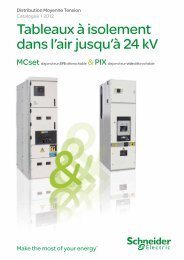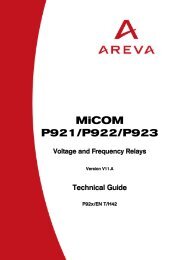You also want an ePaper? Increase the reach of your titles
YUMPU automatically turns print PDFs into web optimized ePapers that Google loves.
1 Harmonic quantitiesTo help the reader follow the discussion, we willfirst review the definitions of a number of termsrelated to harmonics phenomena. Readersalready familiar with the basic terminology mayproceed directly to the next chapter.On AC industrial power supply networks, thevariation of current and voltage with time isconsiderably different from that of a pure sinewave (see fig. 1 ).The actual waveform is composed of a numberof sine waves of different frequencies, includingone at the power frequency, referred to as thefundamental component or simply the"fundamental".Harmonic componentThe term "harmonic component", or simply"harmonic", refers to any one of the abovementionedsinusoidal components, the frequencyof which is a multiple of that of the fundamental.The amplitude of a harmonic is generally a fewpercent of that of the fundamental.Harmonic orderThe harmonic order, also referred to as theharmonic number, is the ratio of the frequency f nof a harmonic to that of the fundamental(generally the power frequency, i.e. 50 or 60 Hz):n = f fn1By definition, the harmonic order of thefundamental f 1 is equal to 1. Note that theharmonic of order n is often referred to simply asthe n th harmonic.SpectrumThe spectrum is the distribution of theamplitudes of the various harmonics as afunction of their harmonic number, oftenillustrated in the form of a histogram (see fig. 2 ).I phaseFundamentalDistorted waveHarmonictFig.1 : shape of a distorted wave.Cahier Technique <strong>Schneider</strong> <strong>Electric</strong> no. 152 / p.4


